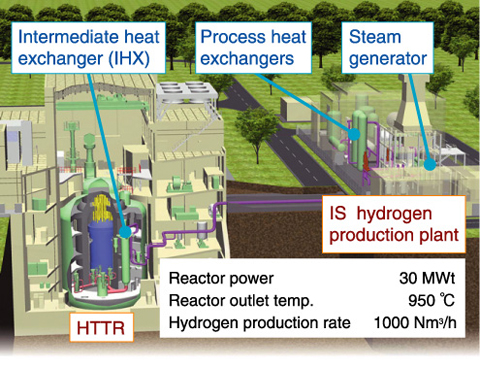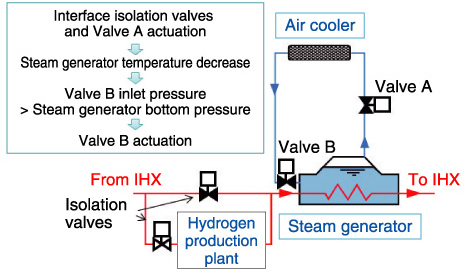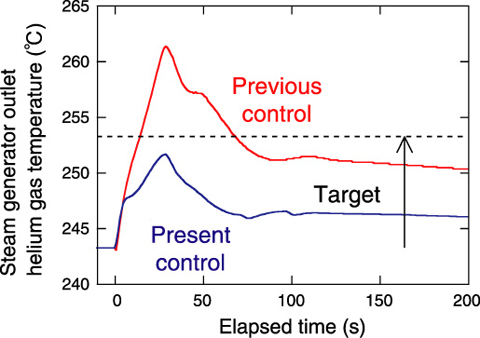
Fig.9-5 HTTR-IS nuclear hydrogen production system

Fig.9-6 Sequence control for mitigation of load variation

Fig.9-7 The efficacy of a proposed control (calculation)
High temperature gas-cooled reactors are expected to significantly contribute to CO2 emissions reduction not only in terms of power production but also by non-electric applications such as hydrogen production. JAEA has been planning to construct a hydrogen production system connected to the High Temperature Engineering Test Reactor (HTTR), the HTTR-IS system, which will be the world’s first demonstration of nuclear hydrogen production (Fig.9-5).
One of the key technology requirements for the nuclear hydrogen demonstration is to mitigate the impact of thermal load variations at process heat exchangers in the IS hydrogen production plant induced by abnormal events, such as malfunctions of control systems, incorrect operations, etc. Such load variations initiate temperature transients, and the transients transfer to the primary cooling system. This would cause a reactor scram since variations are strictly limited in order to prevent structural issues because of excessive thermal stresses. Hence, mitigation of load variations is crucial for the stable operation of nuclear reactors. We have been carrying out the design of a thermal load mitigation system consisting of a steam generator and an air cooler. We also developed a plant dynamics code for the system, and the feasibility of the mitigation system has been confirmed. However, the previous control system is not acceptable in a case in which isolation from the secondary cooling system is required, as it is in the case of IS hydrogen production plants, since the increase in the rate and amount of the thermal load is significantly large.
We are developing sequential control interfacing isolation valves at Valve A, which permits mitigation of the helium gas temperature variation at the steam generator outlet. Also, actuation conditions of the valves have been identified in which stable natural circulation between the steam generator and air cooler can be performed without operator intervention (Fig.9-6). Simulation results clearly showed that continuous reactor operation can be attained in the case of abnormal events in hydrogen production plants (Fig.9-7). Further developments will include the validation of the plant dynamics code which will be used for safety evaluation of the HTTR-IS system.
<Previous: 9-1 | Next: 10 Nuclear Fuel Cycle Technological Development >